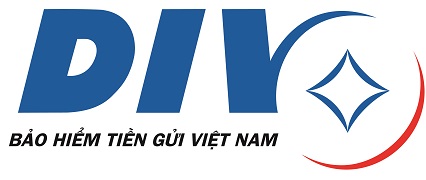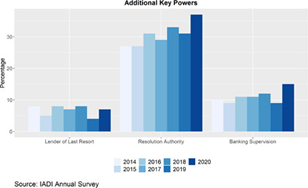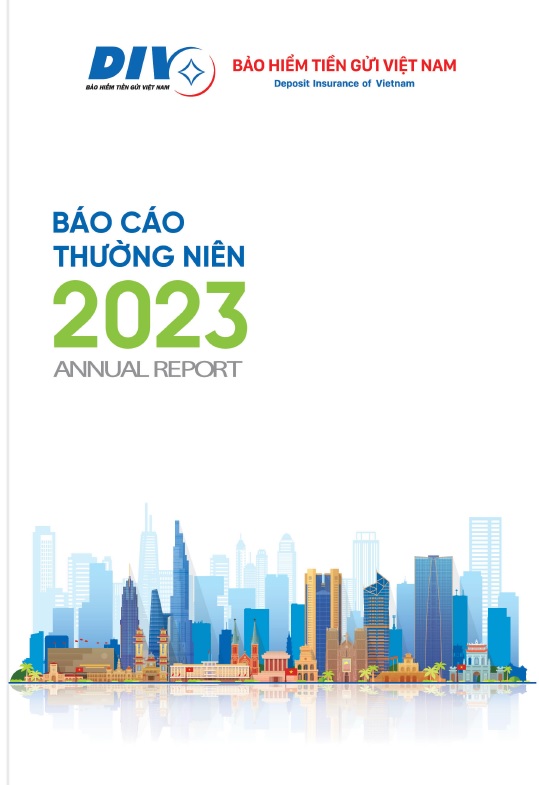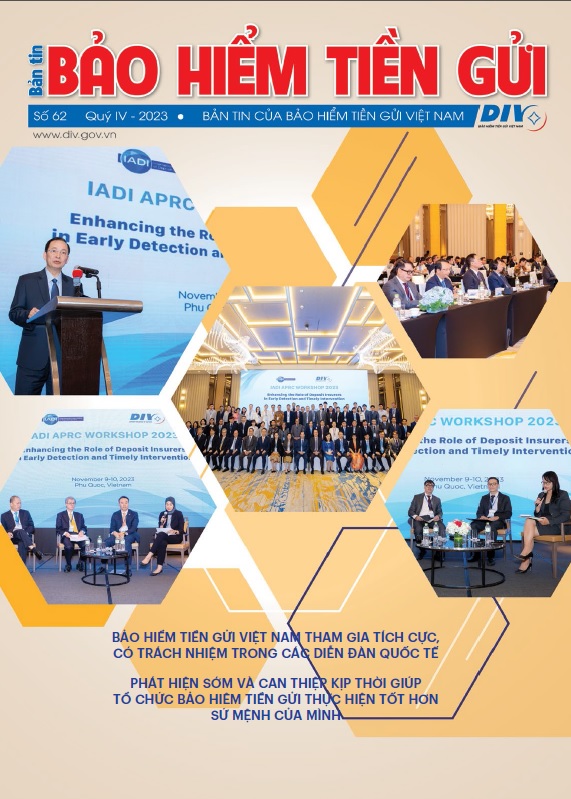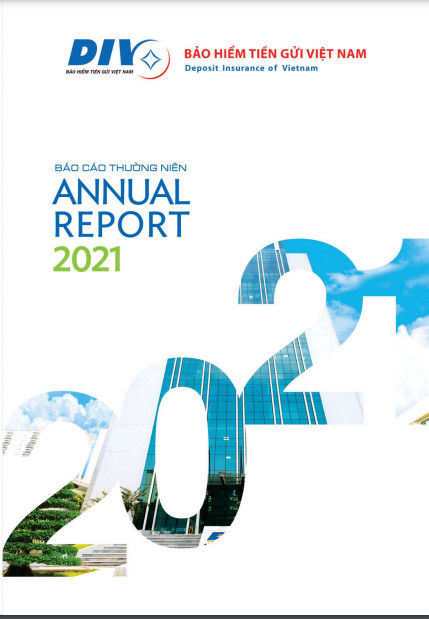Deposit insurance ensures the reimbursement of insured deposits within the coverage limit to depositors when the insured institution falls into insolvency or bankruptcy. After 25 years of operation, the Deposit Insurance of Vietnam (DIV) has paid accurately, fully, and promptly to thousands of depositors at dozens of people's credit funds (PCFs), amounting to tens of billions of VND, helping to prevent collapses, legal disputes, and improving public confidence—thereby contributing to the stable development of the credit institution system. Importantly, until now, the DIV has not required support from the State budget or external borrowing.
In accordance with the 2012 Law on Deposit Insurance, the DIV has effectively used idle funds for investment (recording an investment-to-total-funds ratio of approximately 95–96% from 2013 to the present), aiming to grow and develop capital to gradually enhance financial capacity. This effort is notable in the context where the Law on Deposit Insurance significantly narrowed the investment portfolio (from 6 investment tools in 2000–2008, to 7 in 2008–2012, and down to only 3 since 2013—with only government bonds remaining a revenue-generating instrument). From VND 1 trillion in State-allocated capital, as of December 31, 2024, the DIV's total capital reached approximately VND 126.27 trillion. Alongside premium collections, investment income has contributed to capital accumulation and the strengthening of the professional reserve fund.
The Need to Revise the 2012 Law on Deposit Insurance
The Strategy for the Development of Deposit Insurance to 2025, with orientation to 2030, approved by the Prime Minister under Decision No.1660/QĐ-TTg dated December 30, 2022, emphasizes the necessity to "enhance the financial capacity of the deposit insurer to increase depositor confidence," and to improve the quality and effectiveness of activities such as "capital management, investment, and reimbursement of insured deposits in accordance with Vietnamese law."
With the current coverage limit of VND 125 million per depositor per insured institution, the DIV can fully protect about 91% of insured depositors, meeting the International Association of Deposit Insurers (IADI) recommendation of covering 90–95% of total depositors. This limit is appropriate for the DIV’s current financial capacity to respond to risks through its reserve fund, which: i) ensures immediate reimbursement for 100% of PCFs (accounting for 97% of insured institutions); ii) meets specific reimbursement needs at commercial banks—based on deposit scale segmentation, the DIV can reimburse one bank ranked sixth in the large bank group, or three of the lowest in that group, or eight top-ranked banks in the medium group, or thirteen lower-tier banks in that group, or fifty-two banks in the small group.
If there is a widespread collapse involving multiple banks or contagion effects, the reimbursement capacity will be seriously challenged. Moreover, the responsibility to protect depositors has expanded beyond merely "reimbursing," now encompassing preventive actions through examination and supervision, and participation in credit institution restructuring. The 2024 Law on Credit Institutions (CIs) emphasizes a deeper role for the DIV in restructuring weak CIs throughout their life cycle:
i) lending to support reimbursement in case of mass withdrawals;
ii) special loans to commercial banks, cooperative banks, and microfinance institutions;
iii) special loans to commercial banks under special control;
iv) purchasing long-term bonds issued by the receiving CI in mandatory transfers as decided by the SBV;
v) participating in the development of plans, proposing coverage limits, and coordinating in the reimbursement of insured deposits, with the maximum limit equal to insured deposits of individuals at PCFs/CIs.
This necessitates a revision of the 2012 Law on Deposit Insurance to align with the strategy and practical requirements for the financial capacity of the deposit insurer to fulfill its role as a "pay-box plus" institution, which is essentially the model that the DIV is undertaking.
Key Highlights of the Draft Revised Law on Deposit Insurance 2025
First, Article 7 of the Draft Law stipulates: "The State has policies to protect the legitimate rights and interests of depositors" and "The State has policies to manage and utilize capital to preserve and grow the capital of the deposit insurance organization." The Draft links the protection of depositors' rights and interests to the requirement of capital preservation and growth.
Second, the Draft harmonizes benefits and obligations in investment activities, covering "capital formation mechanisms" (Article 30), "investment portfolio" (Article 31), and "capital growth" to ensure financial capacity (Article 7):
Clause 1, Article 31 emphasizes that the deposit insurer may use operating capital to: a) purchase and sell government bonds, local government bonds, and SBV bills; b) purchase and sell bonds and certificates of deposit issued by state-owned commercial banks and joint-stock commercial banks with more than 50% state ownership; c) deposit funds at the SBV and such banks. The operating capital investment portfolio is diversified (7 tools; 10 forms, 4 channels), allowing both purchase and sale (whereas the 2012 Law only permitted purchases—even in cases where the DIV temporarily lacked liquidity).
Article 30 expands the definition of "operating capital" to include: charter capital from the State budget, borrowed capital, professional reserve fund, development investment fund, financial reserve fund, and other lawful sources—6 components (up from 4 in the 2012 Law). Article 31 also includes "borrowed capital" as a basis for emergency funding if reimbursement capacity is temporarily insufficient.
Third, the Draft includes two articles on risk management in investment and financial-accounting-audit regimes for the deposit insurer. It requires the deposit insurer to "control and manage risks and make provisions for investment risks as guided by the Government" and for the Government to "stipulate the procedures for risk control and management, provisioning, and use of risk reserves in the deposit insurer’s investment activities."
Issues and Recommendations
It can be affirmed that the provisions in the Draft Revised Law on Deposit Insurance 2025 represent a significant advancement in deposit insurance policy-making. The DIV must reinforce its financial capacity to participate more deeply in CI restructuring. The Draft inherits key provisions from the 2012 Law, enhances the role of the DIV, and incorporates lessons from the 2000–2012 investment period. The draft law should continue to be reviewed, revised, and supplemented in a manner that promotes the involvement of the SBV in representing the Government to decide on certain matters, thereby creating greater opportunities and autonomy for the timely and effective implementation of deposit insurance policies.
Regarding the capital used for investment: Essentially, investment should be based on the availability of idle funds, and cumulative investments must remain below total operating capital to maintain liquidity for reimbursement. The Draft should clarify/add the definition of "temporarily idle capital" in Article 4.
Regarding the investment portfolio: Clause 2, Article 31, which assigns the Government to "regulate investment portfolio criteria, structure, and methods," may be impractical due to complex approval processes. The Draft should delegate this to the SBV through guiding documents. Clause 3, Article 31, stating "the deposit insurer shall purchase long-term bonds of the CI under mandatory transfer as decided by the SBV," needs to clarify whether such bonds are part of the investment portfolio or non-investment tools.
On risk management, accounting, and handling negative income-expenditure gaps: The DIV currently uses the same operating capital for investment and for special loans or long-term bond purchases for restructuring participation. The Draft should distinguish between revenue-generating investment tools and non-investment tools serving political duties.
The Draft permits special loans to be accounted against the professional reserve fund if they are non-recoverable, and includes a provision to address income-expenditure gaps when using operating capital for reimbursement or restructuring (Article 32). It also has a provision for handling crisis situations. However, the Draft should clarify the "mechanism for handling negative income-expenditure gaps" due to:
- Whether it is necessary to segregate capital for different uses (investment vs. restructuring);
- The need to separate risk provisioning (for investment portfolios) from income-expenditure gap handling for: i) purchase of non-investment tools (e.g., long-term bonds); ii) non-recoverable purchases (e.g., when the transferred CI goes bankrupt); iii) losses from selling investment/non-investment tools for reimbursement; iv) non-recoverable special loans; v) loss or erosion of the deposit insurer’s capital during crisis intervention.
The Draft should clarify the provision that the deposit insurer may "develop a plan to increase deposit insurance premiums to offset special loan costs that exceed the coverage limit." Increasing premiums for this purpose would be difficult and unfair under the current flat-rate premium system and the ex-ante funding. Typically, deposit insurers only raise premiums to address funding shortfalls, using forms such as supplementary collection, rate adjustment, or special premiums depending on normal or crisis conditions. The principle that "deposit insurance costs are borne by banks" does not mean that liquidity for reimbursement must always be supplied by insured institutions. IADI recommends that deposit insurers have or be granted access to emergency funding mechanisms (borrowing and/or support capital).
Communication Department (Translation)
